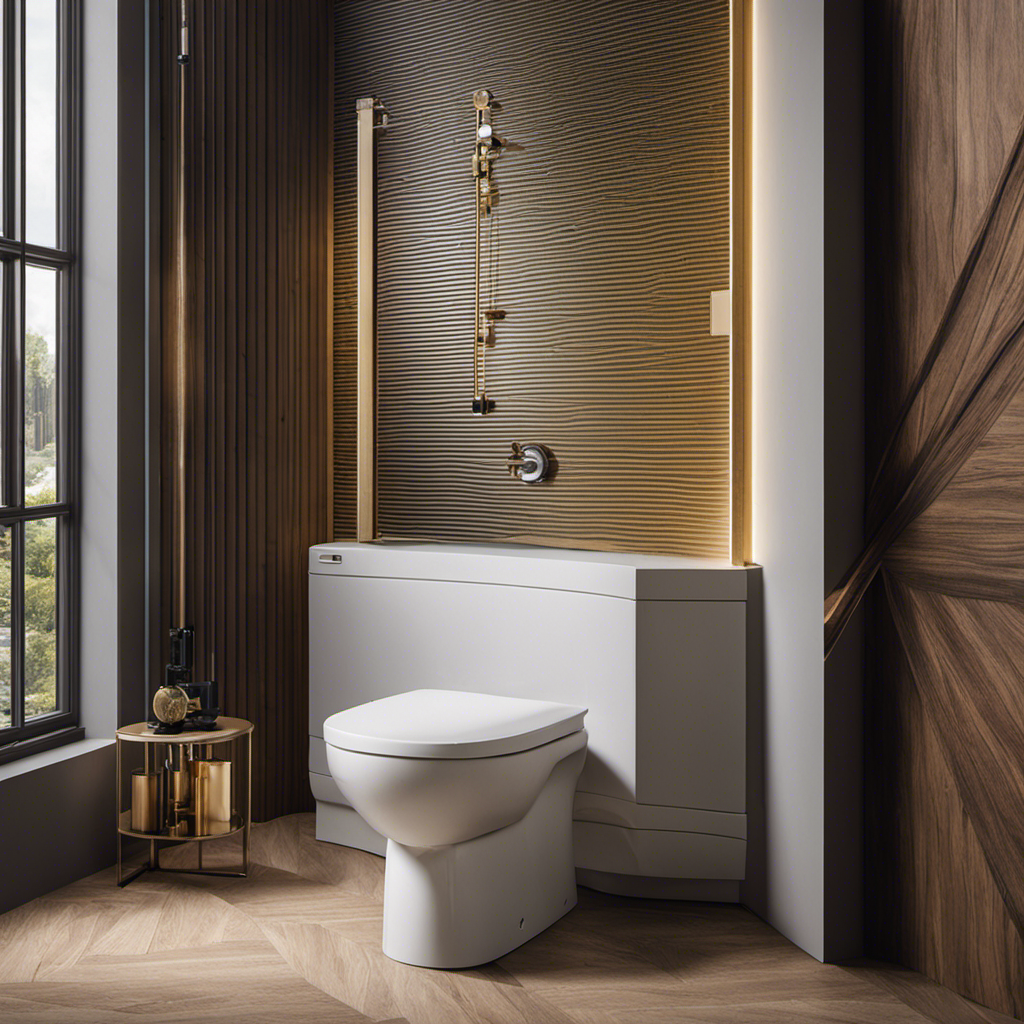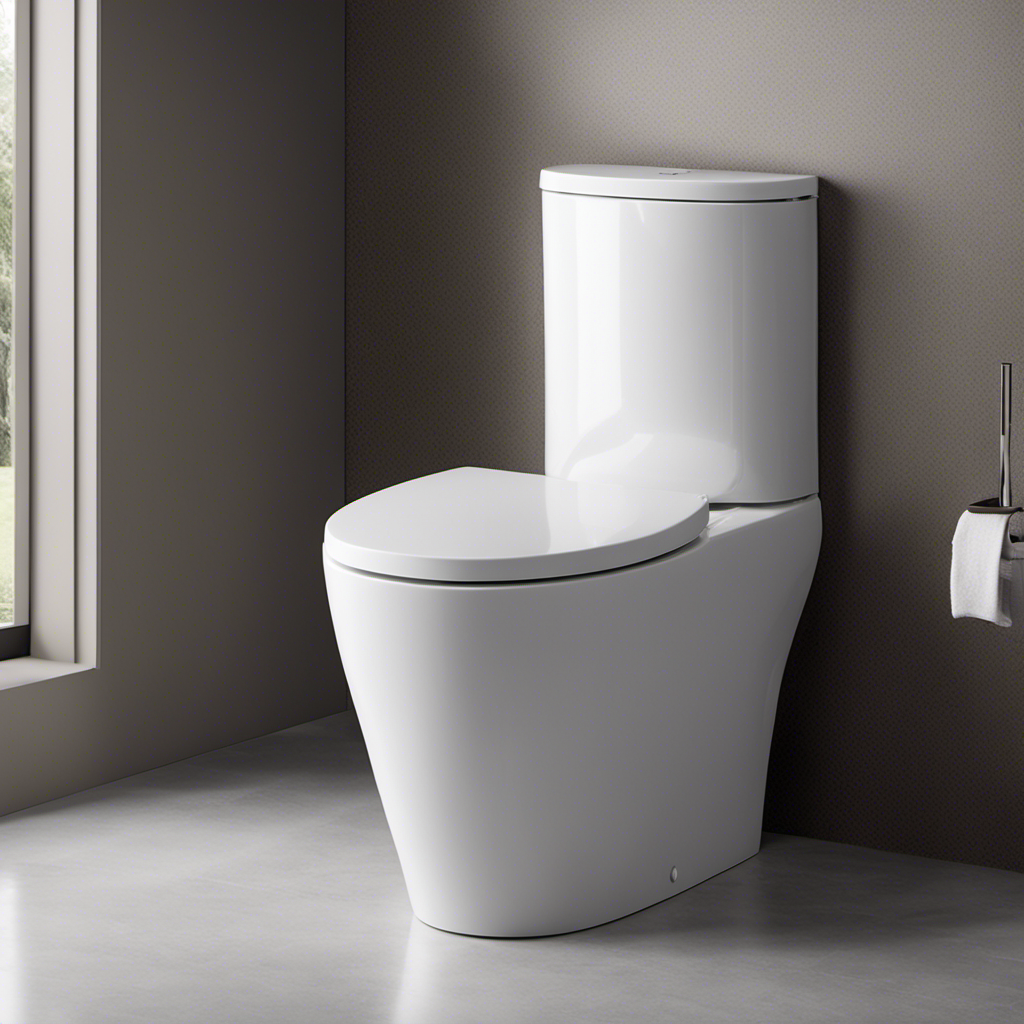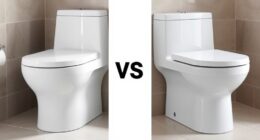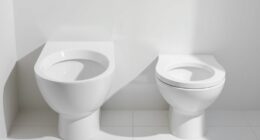I’m about to embark on a bathroom renovation project, and the first thing on my to-do list is finding the perfect toilet.
But before I can start shopping, I need to know how to measure for a new toilet. It may seem like a simple task, but getting the dimensions right is crucial for a seamless installation.
In this article, I’ll walk you through the process step by step, so you can confidently choose the right toilet for your space.
Let’s get started!
Key Takeaways
- Measure the rough-in distance to determine the toilet’s fit in your bathroom.
- Consider comfort and style preferences when choosing a toilet seat.
- Determine the toilet bowl height based on individual needs, such as standard height or comfort height for easier access.
- Consider the toilet tank size to ensure sufficient flushing power, comparing different tank capacities.
Understanding Toilet Dimensions
To understand toilet dimensions, you’ll need to measure the rough-in distance. This is the distance from the wall behind the toilet to the center of the drainpipe. It is crucial for proper toilet installation and ensuring that the toilet fits perfectly in your bathroom.
The most common rough-in size is 12 inches, but other options like 10 or 14 inches are also available. Once you have determined the rough-in size, you can start exploring the wide range of toilet seat options. From standard seats to ergonomic designs, there are various choices to suit your comfort and style preferences.
Now that you understand the importance of toilet dimensions and the available seat options, let’s dive into how to measure the rough-in size.
Measuring the Rough-In Size
Make sure you know the rough-in size of your existing toilet before purchasing a replacement. To measure for a new toilet, start by measuring the rough-in size. This is the distance between the wall behind the toilet and the center of the closet bolts on the floor. Use a tape measure and measure from the wall to the center of one of the closet bolts.
Typically, the rough-in size is either 10, 12, or 14 inches. Once you have the rough-in size, you can use it to calculate the floor space needed for the new toilet. Measure the width of the area where the toilet will be installed and make sure there is enough room for the new toilet.
Additionally, consider any obstructions such as cabinets or walls that may affect the placement of the new toilet.
Determining the Toilet Bowl Height
Determining the toilet bowl height is essential when choosing a replacement. Evaluating the ergonomic design and comparing different seat heights are crucial factors in selecting the right toilet.
The height of the toilet bowl affects comfort and accessibility, making it an important consideration for people of different ages and abilities.
To evaluate the ergonomic design, start by measuring the distance from the floor to the top of the toilet bowl. Standard toilets typically have a height of around 15 to 17 inches. However, there are also comfort height toilets available, which are higher and offer easier access for individuals with mobility issues or the elderly.
Comparing different seat heights is also important. Some toilets have adjustable seat heights or come with different seat options. This allows you to customize the toilet to your specific needs and preferences.
Overall, understanding and evaluating the toilet bowl height is essential for choosing a replacement that provides optimal comfort and accessibility for you and your family.
Choosing the Right Toilet Tank Size
When deciding on the right toilet for your needs, it’s important to consider the size of the tank. The toilet tank capacity plays a crucial role in determining the flushing power of the toilet. A larger tank capacity allows for a greater amount of water to be stored, resulting in a stronger and more effective flush. On the other hand, a smaller tank capacity may not provide enough water for a complete and efficient flush. To help you understand the different toilet tank capacities available, here is a comparison table:
| Tank Capacity | Flushing Power |
|---|---|
| 1.6 gallons | Standard |
| 1.28 gallons | Water-efficient |
| 0.8 gallons | Ultra-water-saving |
| 3.5 gallons | Power flush |
Considering Additional Clearance Requirements
To ensure optimal functionality, be aware of the additional clearance requirements for your toilet installation.
When installing a toilet, it is important to consider the clearance restrictions in order to ensure proper operation and prevent any potential issues.
First, you need to measure the distance from the wall to the toilet flange, which is the pipe that connects the toilet to the sewer line. This measurement will determine how far the toilet should be placed from the wall.
Additionally, you should also consider the clearance requirements for the sides of the toilet. This is especially important if you have limited space in your bathroom.
Conclusion
After carefully measuring for a new toilet, you can confidently make the right choice for your bathroom. By understanding toilet dimensions and measuring the rough-in size, you can ensure a perfect fit.
Determining the toilet bowl height and choosing the right tank size are also important factors to consider. Additionally, it’s crucial to take into account any additional clearance requirements.
So, be precise in your measurements and let your bathroom blossom with a beautiful, bespoke, and balanced toilet.
Happy measuring and may your bathroom be a place of blissful relaxation and tranquility!










